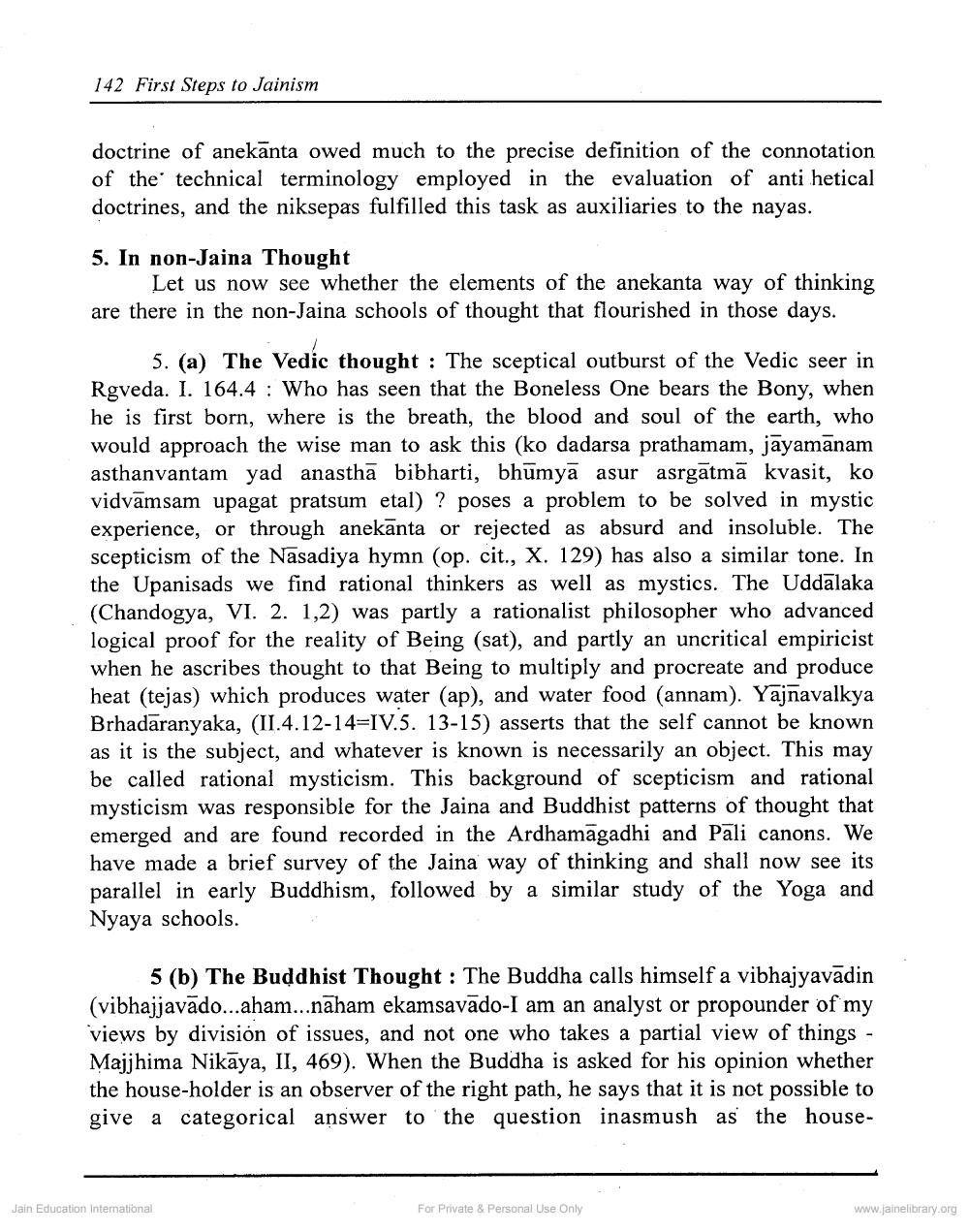________________
142 First Steps to Jainism
doctrine of anekānta owed much to the precise definition of the connotation of the technical terminology employed in the evaluation of anti hetical doctrines, and the niksepas fulfilled this task as auxiliaries to the nayas.
5. In non-Jaina Thought
Let us now see whether the elements of the anekanta way of thinking are there in the non-Jaina schools of thought that flourished in those days.
5. (a) The Vedic thought : The sceptical outburst of the Vedic seer in Rgveda. I. 164.4 : Who has seen that the Boneless One bears the Bony, when he is first born, where is the breath, the blood and soul of the earth, who would approach the wise man to ask this (ko dadarsa prathamam, jāyamānam asthanvantam yad anasthā bibharti, bhūmyā asur asrgātmā kvasit, ko vidvāmsam upagat pratsum etal) ? poses a problem to be solved in mystic experience, or through anekanta or rejected as absurd and insoluble. The scepticism of the Nasadiya hymn (op. cit., X. 129) has also a similar tone. In the Upanisads we find rational thinkers as well as mystics. The Uddalaka (Chandogya, VI. 2. 1,2) was partly a rationalist philosopher who advanced logical proof for the reality of Being (sat), and partly an uncritical empiricist when he ascribes thought to that Being to multiply and procreate and produce heat (tejas) which produces water (ap), and water food (annam). Yajnavalkya Brhadaranyaka, (II.4.12-14=IV.5. 13-15) asserts that the self cannot be known as it is the subject, and whatever is known is necessarily an object. This may be called rational mysticism. This background of scepticism and rational mysticism was responsible for the Jaina and Buddhist patterns of thought that emerged and are found recorded in the Ardhamāgadhi and Pali canons. We have made a brief survey of the Jaina way of thinking and shall now see its parallel in early Buddhism, followed by a similar study of the Yoga and Nyaya schools.
5 (b) The Buddhist Thought : The Buddha calls himself a vibhajyavādin (vibhajjavado...aham...naham ekamsavado I am an analyst or propounder of my views by division of issues, and not one who takes a partial view of things - Majjhima Nikāya, II, 469). When the Buddha is asked for his opinion whether the house-holder is an observer of the right path, he says that it is not possible to give a categorical answer to the question inasmush as the house
Jain Education International
For Private & Personal Use Only
www.jainelibrary.org




